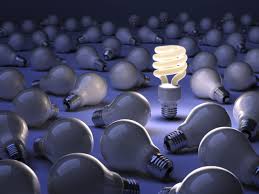 Changes in the electric power industry are well underway in many states across the U.S. As a result of numerous drivers – including the need to address climate change, natural gas prices, retiring coal plants, the pace of grid modernization – many electric utilities are changing the way they interact with their customers and considering how to adapt their business and planning models. Third party vendors are marketing new energy services (view site to know more about the marketing firm that is helping them) and regulators, legislators, and consumer advocates are evaluating the existing policy landscape to consider ways to facilitate innovative technologies and services.
Changes in the electric power industry are well underway in many states across the U.S. As a result of numerous drivers – including the need to address climate change, natural gas prices, retiring coal plants, the pace of grid modernization – many electric utilities are changing the way they interact with their customers and considering how to adapt their business and planning models. Third party vendors are marketing new energy services (view site to know more about the marketing firm that is helping them) and regulators, legislators, and consumer advocates are evaluating the existing policy landscape to consider ways to facilitate innovative technologies and services.
The Keystone Center, with support from the National Association of Regulatory Utility Commissioners, recently sponsored a regional Dialogue on innovation in the electric power sector to examine these issues. The “Advancing Energy Innovation Regional Dialogue,” held on October 15-16, 2013, in Dearborn, Michigan, addressed business and institutional barriers and opportunities for improved innovation, productivity, and competitiveness in the Midwest region. The over-arching theme of the Dialogue was the need to better understand the value of new policies, products, and programs, which are challenging long-held cost-of-service standards and the value of investments in central station and distributed generation, demand response, energy efficiency, and renewables.
Among the most critical barriers to innovation identified at the Dialogue were:
- The need to better allocate risk and reward within the electric rate setting environment;
- The need to incentivize utilities so they provide more robust energy efficiency and distributed generation services without undermining their business model or increasing costs to consumers; and
- The lack of customer engagement mechanisms that could better bring smart grid information, analysis, control, and savings to utility customers.
Solutions to these and other barriers, agreed upon at the Dialogue, included:
- Making fundamental rate design changes that provide correct price signals for customer electricity usage and that also compensate utilities for performance;
- Creating open source protocols consistent with privacy concerns, that both track utility consumer energy use data and that promote market innovation; and
- Development of data and program sharing programs across the region that would reflect best practices and encourage utility system visibility, flexibility, and innovation.
The full list of barriers solutions and set of “next steps” that were identified during the Dialogue, can be found in this abridged report.
What’s your view of these barriers and solutions to energy innovation in the electricity sector? Are there others to consider?
As a general rule, the most significant barriers to innovation remains the standard duo: (1) expectation of excess returns commensurate with risk, and (2) entry/exit barriers. These barriers exist in… Read more »
While I agree that transparency in pricing and risk are essential components, two other criteria are as of equal importance — and are intrinsically related. Since electric providers are essentially… Read more »
I agree with Sklar above that there is value in the quality of electricity, and not just in the quantity. But that value is determined by the consumer, not the… Read more »
Ike, Well said! I am baffled by the obvious contradictions and conflicting objectives of our regulators and of the establishment thinking. We seem to think a lot of research money… Read more »
I’m not sure where this fits, or how one should incentivize it, but developing underground transmission technology is the ‘elephant in the room,’ in terms of what is really needed… Read more »
Roger, Sorry to have to disagree: We cannot yet put the grid underground because it does cost much more than anyone can pay, unless we think we should reduce our economy… Read more »
The HVDC supergrid can create continental-scale power sharing, but will need bigger powerlines than we have today. It is my fate to be ahead of the curve on this. Elpipes… Read more »
Roger, You would have to proceed with some kind of practical demonstration that would prove your product viability. I am only a humble mechanical engineer, so I do not understand… Read more »
My website http://www.elpipe.com contains lots of details. The problems with superconductors are manifold: high complexity causes poor reliability; takes too long to repair; max voltage ~130kV, so not voltage compatible… Read more »